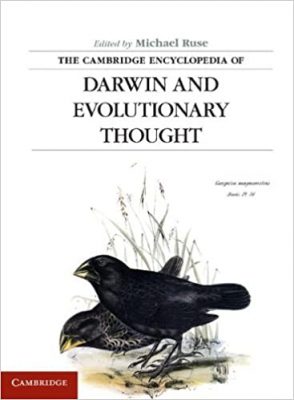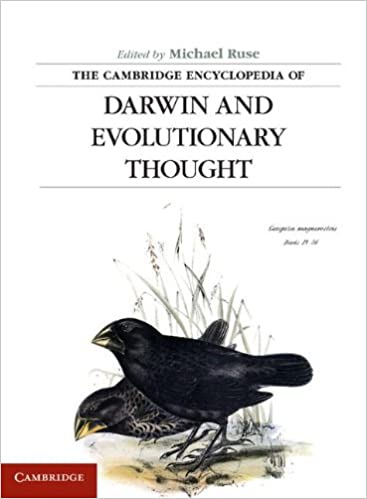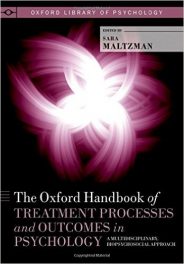 Editor: Michael Ruse
Editor: Michael Ruse
Publisher: Cambridge University Press – 568 pages
Book Review by: Nano Khilnani
The classic theory of evolution and natural selection (“survival of the fittest”) developed and written about by the famous Charles Darwin (1809-1882) is discussed in this book by people from around the world in the form of essays. They also discuss his activities as a biologist, geologist, and naturalist.
The discussions are of a very wide range, and they are mainly on the the influence of this important but oftentimes controversial theory upon some of the important aspects of human learning and living, namely:
- Culture
- Domination
- Gender
- Literature
- Medicine
- Philosophy
- Politics
- Religion
- Science
- Sex
Sixty-seven people contributed to the content of this book by authoring or coauthoring its 63 chapters. The authors are from 15 countries: Canada, China, Denmark, France, Germany, Ireland, Israel, Italy, the Netherlands, New Zealand, Singapore, Spain, Switzerland, the United Kingdom, and the United States.
Introduction
- Origins and the Greeks
- Evolution Before Darwin
- Charles Darwin’s Geology: The Root of His philosophy of the Earth
- Looking Back with “Great Satisfaction” on Charles Darwin’s vertebrate Paleontology
- The Origins of the Origin: Darwin’s First Thoughts about the Tree of Life and natural Selection, 1837-1839
- Darwin and Taxonomy
- Darwin and the Barnacles
- The Analogy between Artificial and Natural Selection
- The Origin of Species
- Sexual Selection
- Darwin and Species
- Darwin and heredity
- Darwin and Time
- Darwin’s Evolutionary Botany
- Mimicry and Camouflage
- Chance and Design
- Darwin and Teleology
- The Evolution of the Origin (1859-1872)
- Alfred Russell Wallace
- Darwin and Humans
- Darwin and Language
- Darwin and Ethics
- Social Darwinism
- Darwin and the Levels of Selection
- Darwin and Religion
- Darwinism in Britain
- Darwinism in the United States, 1859-1930
- The German Reception of Darwin’s Theory, 1860-1945
- Darwin and Darwinism in France before 1900
- Encountering Darwin and Creating Darwinism in China
- Darwinism in Latin America
- Botany: 1880s to 1920s
- Population Genetics
- Synthesis Period in Evolutionary Studies
- Ecological Genetics
- Darwin and Darwinism after 1900
- Botany and the Evolutionary Synthesis, 1920-1950
- The Emergence of Life on Earth and the Darwinian Revolution
- The Evolution of the Testing of Evolution
- Mimicry and camouflage: Part Two
- The Tree of Life
- Sociobiology
- Evolutionary Paleontology
- Darwin and Geography
- Darwin and the Finches
- Developmental Evolution
- Darwin’s Evolutionary Ecology
- Darwin and the Environment
- Molecular Biology: Darwin’s Precious Gift
- Challenging Darwinism: Expanding, Extending, Replacing
- Human Evolution After Darwin
- Language Evolution After Darwin
- Language Evolution Since Darwin
- Literature
- Darwin and Gender
- Evolutionary Epistemology
- Ethics After Darwin
- Darwin and Protestantism
- Creationism
- Darwin and Catholicism
- Judaism, Jews, and Evolution
- Religion: Islam
- From Evolution and Medicine to Evolutionary Medicine
Charles was born on February 12, 1809 (the same day Abraham Lincoln was born in the United States) as the fifth of six children, to Dr. Robert Darwin and his wife Sussanah in Shrewsbury, a town in the English Midlands near the border of Wales in northern England
Darwin was sent to study in one of England’s famous public (in reality, private) schools. After that he was sent north to study medicine in Edinburgh, the capital of Scotland. After two years young Charles realized that medicine was not for him. So he moved south to Cambridge to become a clergyman in the Church of England, graduating with a degree in 1831.
Life for some takes strange turns. For Charles Darwin, with connections he had made as a student, he was offered a chance to join the British warship HMS Beagle, as it set off for South America to map the coastline of that continent. This voyage, which eventually went around the world, took a long five years, returning to England in 1836. By this time, all his thoughts of becoming a clergyman had vanished.
Darwin then settled down into full-time work as a scientist, supported by family money. After his experiences discovering South America, he decided to study evolution. In early 1839, Charles married his cousin Emma Wedgwood and they moved to a house in Kent.
Charles Darwin did not publish any material for more than twenty years after his HMS Beagle travels and his later discoveries as well, on evolution and natural selection. It was not until 1859 that his world-famous book – On the Origin of the Species – was published.
It provided compelling evidence of evolution in the development of various species of animals and plants. He received worldwide acclaim for it. By 1870, much of the worldwide scientific community had accepted evolution as a fact, and natural selection made perfect sense to critical thinkers.
Editor:
Michael Ruse is Lucyle T. Werkmeister Professor of Philosophy and Director of the Program in the History and Philosophy of Science at Florida State University. He is the author of twenty books and the founding editor of Biology and Philosophy.







